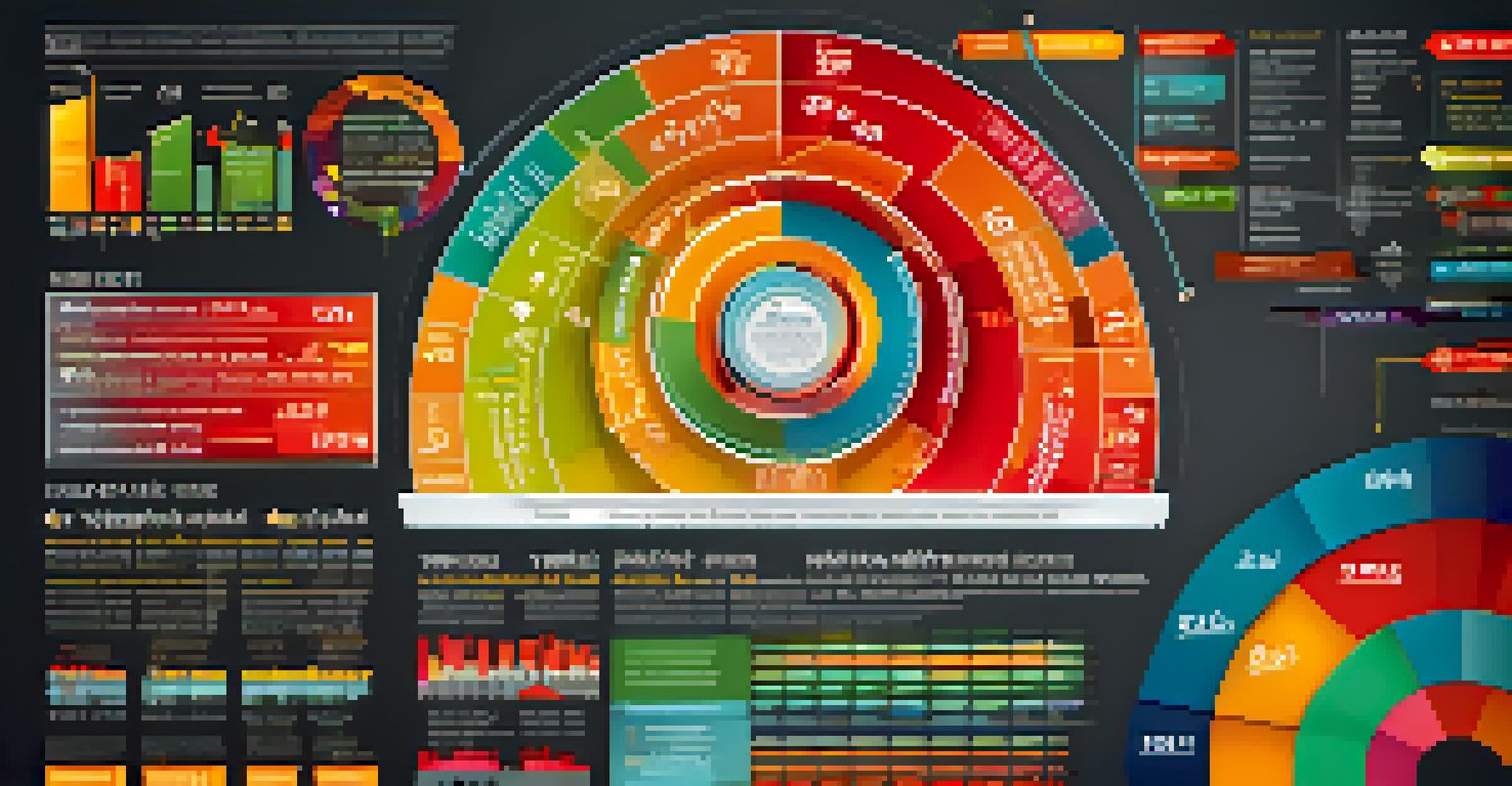Understanding Market Cycles: Timing Your Investment Moves

What Are Market Cycles and Why Do They Matter?
Market cycles refer to the natural fluctuations in the economy and financial markets. Understanding these cycles is crucial for investors, as they can significantly impact investment strategies and outcomes. By recognizing the phases of market cycles, you can make more informed decisions about when to invest or divest.
In investing, what is comfortable is rarely profitable.
Typically, market cycles consist of four main phases: expansion, peak, contraction, and trough. Each of these phases has distinct characteristics, influencing investor behavior and market performance. For instance, during an expansion phase, economic indicators like employment and production tend to rise, signaling a good time to invest.
By being aware of where we are in the market cycle, you can better time your investment moves. This approach helps reduce risks and maximize returns, ultimately leading to a more successful investment journey.
Recognizing the Phases of Market Cycles
To navigate market cycles effectively, you must understand each phase in detail. The expansion phase is characterized by economic growth, increasing consumer confidence, and rising asset prices. As these indicators improve, investors often become more optimistic, leading to increased buying activity.

The peak phase follows, where the economy is at its strongest, but signs of overheating may appear, such as inflation. It's essential to be cautious during this phase, as it can quickly transition into contraction. Recognizing this shift can help you make timely decisions to protect your investments.
Understand Market Cycle Phases
Recognizing the four phases of market cycles—expansion, peak, contraction, and trough—can guide your investment decisions.
During the contraction phase, economic activity slows down, leading to declining asset prices and increased unemployment. This phase can be daunting, but it also presents opportunities for savvy investors to buy undervalued assets. Finally, the trough phase marks the bottom of the cycle, where the market begins to recover, setting the stage for the next expansion.
The Role of Economic Indicators in Timing Investments
Economic indicators are vital tools for understanding market cycles. They include metrics like GDP growth, unemployment rates, and consumer spending, which provide insights into the health of the economy. By monitoring these indicators, you can better gauge where we are in the market cycle.
The stock market is filled with individuals who know the price of everything, but the value of nothing.
For instance, rising GDP and low unemployment typically indicate an expansion phase, encouraging investment. Conversely, if you see rising unemployment and stagnant GDP, it may signal a contraction phase, prompting you to reassess your portfolio. Staying informed about these indicators can help you make smarter timing decisions.
Additionally, other indicators like interest rates and inflation trends can provide further clarity on the market's direction. By combining various economic indicators, you can paint a more comprehensive picture of the current market cycle and adjust your investment strategy accordingly.
Psychology of Investors During Market Cycles
The psychology of investors plays a significant role in market cycles. During an expansion phase, investor optimism can lead to herd behavior, where individuals collectively drive prices higher. This phenomenon can create bubbles that eventually burst, resulting in significant losses for those who invested at the peak.
Conversely, during a contraction phase, fear can dominate the market, causing panic selling. This emotional response often leads to missed opportunities, as prices may drop to attractive levels. Understanding these psychological factors can help you stay rational and stick to your investment strategy, even when the market gets volatile.
Use Economic Indicators Wisely
Monitoring economic indicators like GDP growth and unemployment rates can help you time your investments effectively.
Recognizing your own emotional triggers is equally important. By maintaining a disciplined approach and focusing on long-term goals, you can navigate the inevitable ups and downs of market cycles without getting swept away by the crowd.
Strategies for Investing During Different Market Phases
Different market phases call for unique investment strategies. During an expansion, consider growth-oriented investments, such as stocks in innovative sectors or emerging markets. These investments can benefit from rising consumer confidence and increased spending.
As you approach the peak phase, it might be wise to shift your focus toward more defensive investments, such as bonds or dividend-paying stocks. These assets can provide stability and income during uncertain times, helping to protect your portfolio against potential downturns.
In the contraction phase, consider opportunities to buy undervalued assets or stocks in resilient industries. By adopting a contrarian approach, you may find significant potential for growth as the market eventually recovers and enters the next expansion phase.
The Importance of Diversification Across Market Cycles
Diversification is a crucial strategy for weathering the fluctuations of market cycles. By spreading your investments across various asset classes, sectors, and geographical regions, you can mitigate risks associated with market volatility. This approach helps protect your portfolio during downturns while still allowing for growth during expansions.
For example, a well-diversified portfolio might include a mix of stocks, bonds, real estate, and commodities. This balance can reduce the impact of poor performance in any single asset class, ensuring more stable returns over time. Moreover, diversification can provide you with access to different opportunities that arise during various market phases.
Diversify to Mitigate Risks
A diversified portfolio across various asset classes can protect you from market volatility while enabling growth.
Regularly reviewing and rebalancing your portfolio is essential to maintain your desired level of diversification. As market conditions change, your investment mix may need adjustments to align with your goals and risk tolerance.
Real-Life Examples of Market Cycles in Action
Looking at historical market cycles can provide valuable insights into how to navigate them. For instance, the dot-com bubble of the late 1990s exemplifies how investor psychology can lead to rapid price increases followed by a sharp decline. Investors who recognized the signs of the peak phase were better positioned to minimize losses.
Similarly, the 2008 financial crisis demonstrated the importance of understanding market cycles. Many investors panicked during the contraction phase, selling off assets at low prices. Those who maintained a long-term perspective and seized the opportunity to invest during the trough phase were able to recover and benefit from the subsequent expansion.

These real-life examples highlight the significance of being informed and prepared for market cycles. By studying past events, you can better understand the patterns and behaviors that may influence your investment decisions in the future.